A JAMES YAROSH Q&A AS FEATURED IN THE OCTOBER/ NOVEMBER ISSUE OF OUT IN JERSEY MAGAZINE
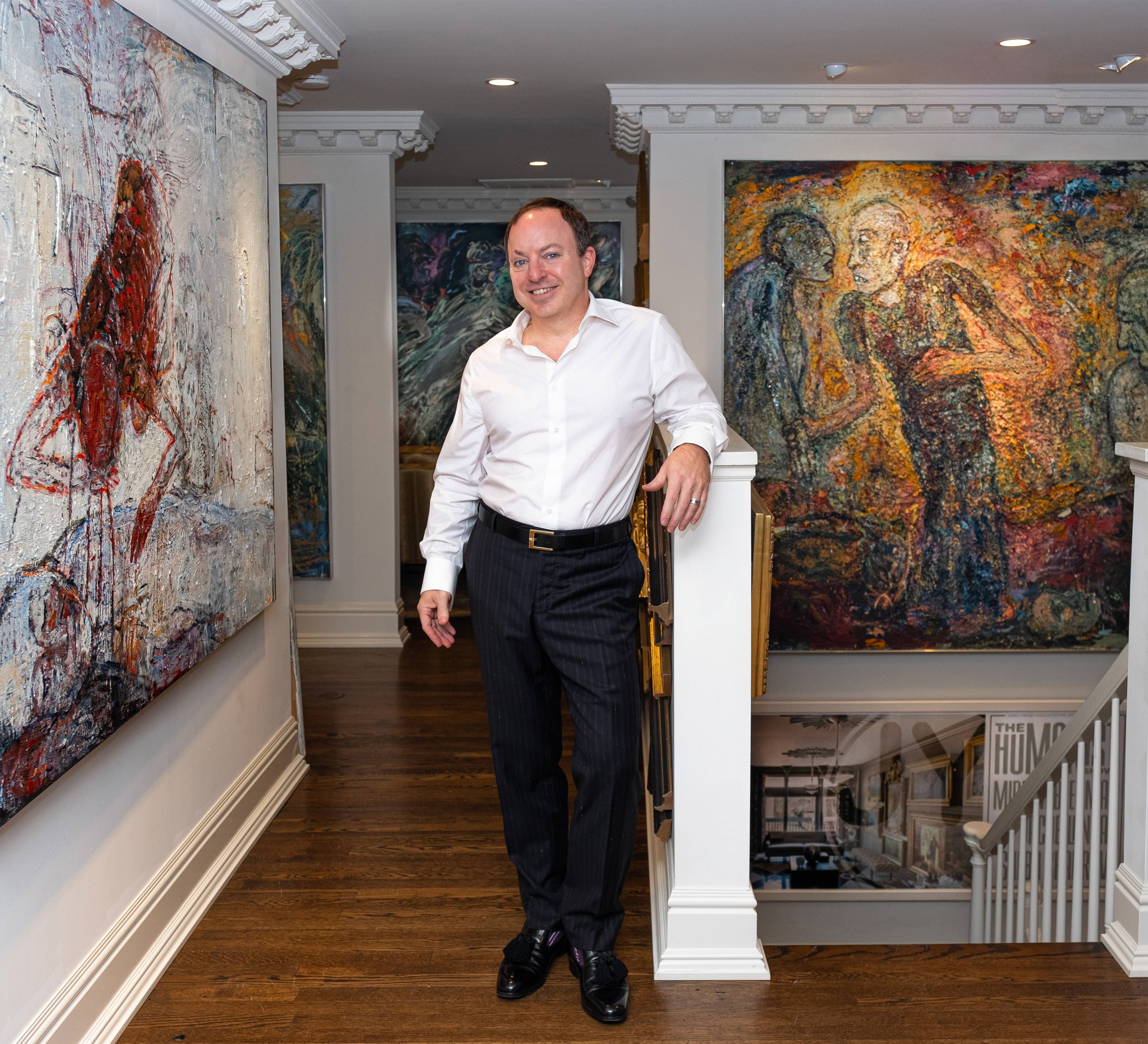
James Yarosh presents THE HUMANIST SHOW at his Holmdel, NJ gallery - PHOTO: Matthew Aquino
JAMES YAROSH DESIGNER, ARTIST, GALLERIST - Johnny Walsh, Out IN Jersey magazine - OCT/NOV issue
James Yarosh is a celebrated designer and artist with a palpable passion for his work. Not only does Yarosh have incredible talent as an artist, an affinity for running a gallery, but also an eye for interior design that transcends far beyond, well, dare I say, your everyday HGTV episode of nearly anything.well, dare I say, your everyday HGTV episode of nearly anything. With his work largely inspired by extensive travel and time in museums, his design is an obvious expression of his life experience rather than merely an understanding of what "looks nice."
"Thank you so much for spending time with Out in Jersey Magazine, tell us, what are you working on?
I'm so excited to be part of your magazine. Thank you!
My gallery, James Yarosh Associates Fine Art and Design Gallery, turned 25 this year, and I’m very proud of what I have been able to create. My Fall 2021 season is just opening with the further outreach of my gallery’s current exhibit, The Humanist Show, which features artist Sheba Sharrow, whose work I will also be exhibiting with my gallery at the New York City art fair Art on Paper.
My gallery efforts have always advocated what greatness looks like in the arts. This exhibit further focuses on narrowing the chasm between the type of art that artists and museums find of interest and what galleries typically offer the public as definitions of what art looks like. This advocacy comes with my wearing three hats in my career—an artist, a gallerist and an interior designer—and I merge ideas and join the voices of artists who understand art is an intellectual engagement and an investment in the rewards of what is possible when we turn our attentions to beauty.
As the show title suggests, art is about what connects us to our humanity. As a painter, I’ve always favored paintings of people and as a designer, my work allows me near portraits of my clients with their homes that become settings that represent all the hopes for their lives going forward. Within that role, I can create spaces to compose and collage a space as if it were a painting, calling upon both my artist’s intuition and industry experience to find the correct answers for each project. It’s both very demanding and rewarding work.
In one of your previous interviews you mention the synergy between your art/design and your extensive travel. Tell us more how travel changes one’s perspective, in whatever way that may be.
Travel, particularly visiting museums here and in Europe, has been a great part of my education. It has formalized my ideas of design, enabling me to learn from the masters by seeing and experiencing art up close. What inspires me most is the near-unimaginable beauty and greatness that a single person can achieve as an artist. When you stand in front of a painting, you stand where the artist stood and can see the marks of his execution and feel the energy that connects us in ways words alone cannot.
I remember loving Egon Schiele’s work when I was a young artist living in Ocean Grove, NJ, in the late ’80s—back when Asbury Park was still the “Wild West”—during my coming of age, and I only knew the work from books. Fast-forward to when my partner, Barney, retired as a chief at the New Jersey Department of Corrections after a 30-year-career and took a part-time job with the airlines. This made travel very accessible. I would say, “Let’s go to New York City to the Neue Galerie to see the German Expressionist artists there,” and he would say he didn’t want to, but then add, “You know, we can fly to Vienna.” Then, suddenly I’m at the Leopold and Albertina museums learning the artists’ biographies with show catalogues and audio tours and seeing art by giants like Oskar Kokoschka and discovering Egon Schiele’s art in person. Seeing such masterpieces in person was all that I hoped for and more.
Barney is bolder than me. He thinks all those things are possible. I tend to color a little more in the lines—which makes us a great team in my mind. There is no doubt the experiences have allowed me to leap and grow in what I can do.
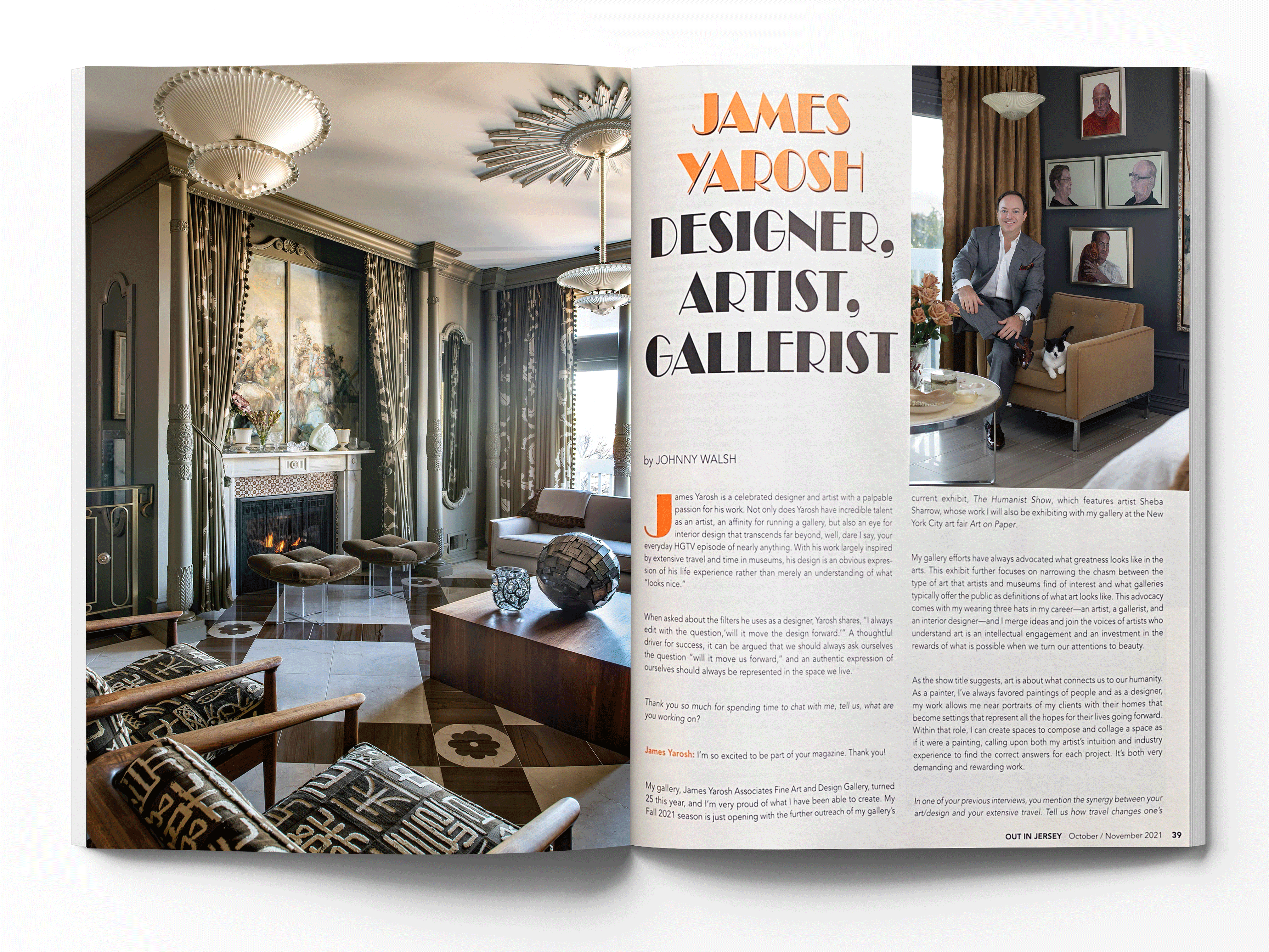
When did your passion for art turn into your passion for interior design?
Identifying as an artist as much as I did as a gay man, I knew artists’ homes were always the most interesting to visit since artists know the importance of having a space that feeds your soul, is healing and fuels creativity. My training began when I opened my gallery space in the building of an interior designer who would enlist me on her jobs to give another artist’s eye on new construction residential projects, with several of them over 20,000 square feet. I learned interior design on the job while growing my gallery and multi-tasked during my first decade of business. Although I am shy by nature, I have learned how to land on my feet on job sites and to sink or swim. As an artist, luckily I had a natural aptitude and earned my experience.
When I turned 40, I really “came out of the closet” as an interior designer. I felt I had a voice that wanted to offer examples of what living with fine art could look like in interior design. Toward that end, in 2009 I took the leap to have my home to be photographed. Happily, it was published internationally in Art & Antiques magazine and the again locally in DesignNJ. I was honored to show this first-hand on the magazine pages. Later, I was awarded the Grand Atrium space in the 2014 Mansions in May Designer Show House, where I successfully presented “An Art Collector’s Sanctuary” at Blairsden Mansion Peapack, Gladstone. Since then, I have not looked back in including both fine art and design as part of my gallery’s presentations.
Your aesthetic is incredible: bold colors, diverse frames, soft colors mixed with striking brass accents. When you approach a new project, what is the first question you ask yourself?
My travel and the time I have spent in museums have informed my idea of order, scale and balance in my design work. My design logic was born with my interpretations of what I admired. For me, museums like the Louvre, the Hermitage and the Prado embrace beauty and craftsmanship thoughtfully and grow design tastefully with the purpose of creating a space worthy of housing art.
My philosophy in design is that there is a logical pecking order when layering beauty: rugs sit on floors, wallpapers and fabrics adorn walls, and art sits at the top, not just as more decoration, but as symbols of our culture that tell the stories of artists and offer us opportunity to be in the presence of greatness. For me, once you understand the “big picture” answers, you can begin to create and realign and reassign elements in a space to manipulate and solve what will make a project sing.
You started the gallery at 29, what can you tell LGBTQ 30-something’s who are embarking on their own entrepreneurship journeys?
Be true to yourself. A silver lining of being LGBTQ is that at hopefully an early age we have already found a successful path to find happiness and learn what definitions of family will look like for us outside of the norm. When I gave a talk at career day at the art department at Monmouth University a number of years ago, I began with the statement that choosing a career in the arts is outside the norms, and because of that, we have an opportunity to redefine what success means to us. I say to anyone who is beginning a career to focus on the work: Do your best work and the rest will follow. I have a bit of a workaholic ethic, so I understand it will take effort on all fronts, but my main mantra has always been: Put out good work, find rules that are true to yourself and the rest will fall in line.
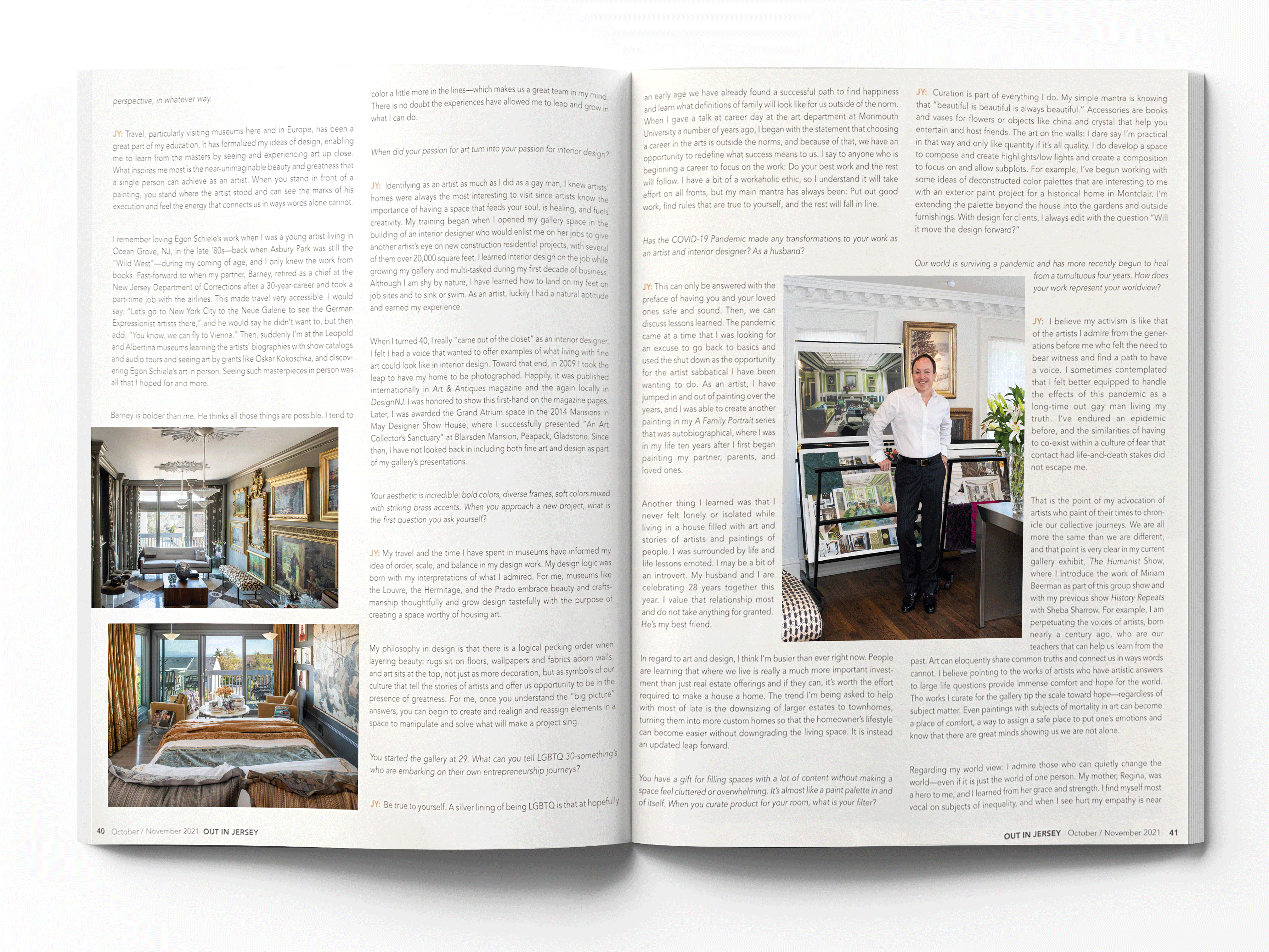
Has the COVID-19 Pandemic made any transformations to your work as an artist and interior designer? As a husband?
This can only be answered with the preface of having you and your loved ones safe and sound. Then, we can discuss lessons learned. The pandemic came at a time that I was looking for an excuse to go back to basics and used the shut down as the opportunity for the artist sabbatical I have been wanting to do. As an artist, I have jumped in and out of painting over the years, and I was able to create another painting in my A Family Portrait series that was autobiographical, where I was in my life ten years after I first began painting my partner, parents and loved ones.
Another thing I learned was that I never felt lonely or isolated while living in a house filled with art and stories of artists and paintings of people. I was surrounded by life and life lessons emoted. I may be a bit of an introvert. My husband and I are celebrating 28 years together this year. I value that relationship most and do not take anything for granted. He’s my best friend.
In regard to art and design, I think I'm busier than ever right now. People are learning that where we live is really a much more important investment than just real estate offerings and if they can, it’s worth the effort required to make a house a home. The trend I’m being asked to help with most of late is the downsizing of larger estates to townhomes, turning them into more custom homes so that the homeowner’s lifestyle can become easier without downgrading the living space. It is instead an updated leap forward.
You have a gift for filling spaces with a lot of content without making a space feel cluttered or overwhelming. It’s almost like a paint palette in and of itself. When you curate product for your room, what is your filter?
Curation is part of everything I do. My simple mantra is knowing that “beautiful is beautiful is always beautiful.” Accessories are books and vases for flowers or objects like china and crystal that help you entertain and host friends. The art on the walls: I dare say I'm practical in that way and only like quantity if it’s all quality. I do develop a space to compose and create highlights/low lights, and create a composition to focus on and allow subplots. For example, I’ve begun working with some ideas of deconstructed color palettes that are interesting to me with an exterior paint project for a historical home in Montclair. I’m extending the palette beyond the house into the gardens and outside furnishings. With design for clients I always edit with the question “Will it move the design forward?”
Our world is surviving a pandemic, and has more recently begun to heal from a tumultuous four years. How does your work represent your worldview?
I believe my activism is like that of the artists I admire from the generations before me who felt the need to bear witness and find a path to have a voice. I sometimes contemplated that I felt better equipped to handle the effects of this pandemic as a long-time out gay man living my truth. I’ve endured an epidemic before, and the similarities of having to co-exist within a culture of fear that contact had life-and-death stakes did not escape me.
That is the point of my advocation of artists who paint of their times to chronicle our collective journeys. We are all more the same than we are different, and that point is very clear in my current gallery exhibit, The Humanist Show, where I introduce the work of Miriam Beerman as part of this group show and with my previous show History Repeats with Sheba Sharrow. For example, I am perpetuating the voices of artists, born nearly a century ago, who are our teachers that can help us learn from the past. Art can eloquently share common truths and connect us in ways words cannot. I believe pointing to the works of artists who have artistic answers to large life questions provide immense comfort and hope for the world. The works I curate for the gallery tip the scale toward hope—regardless of subject matter. Even paintings with subjects of mortality in art can become a place of comfort, a way to assign a safe place to put one’s emotions and know that there are great minds showing us we are not alone.
Regarding my world view: I admire those who can quietly change the world—even if it is just the world of one person. My mother, Regina, was a hero to me, and I learned from her grace and strength. I find myself most vocal on subjects of inequality, and when I see hurt my empathy is near physical. I speak when I hear talk that perpetuates keeping others down. I’ve been very fortunate: I’m here, but I’ve also been there and my hand/mind is there to turn around and help others. It’s clearly bigger than me, but so are the arts and again on these fronts of social justice, the arts have always led the way and so it’s there that I find my role.
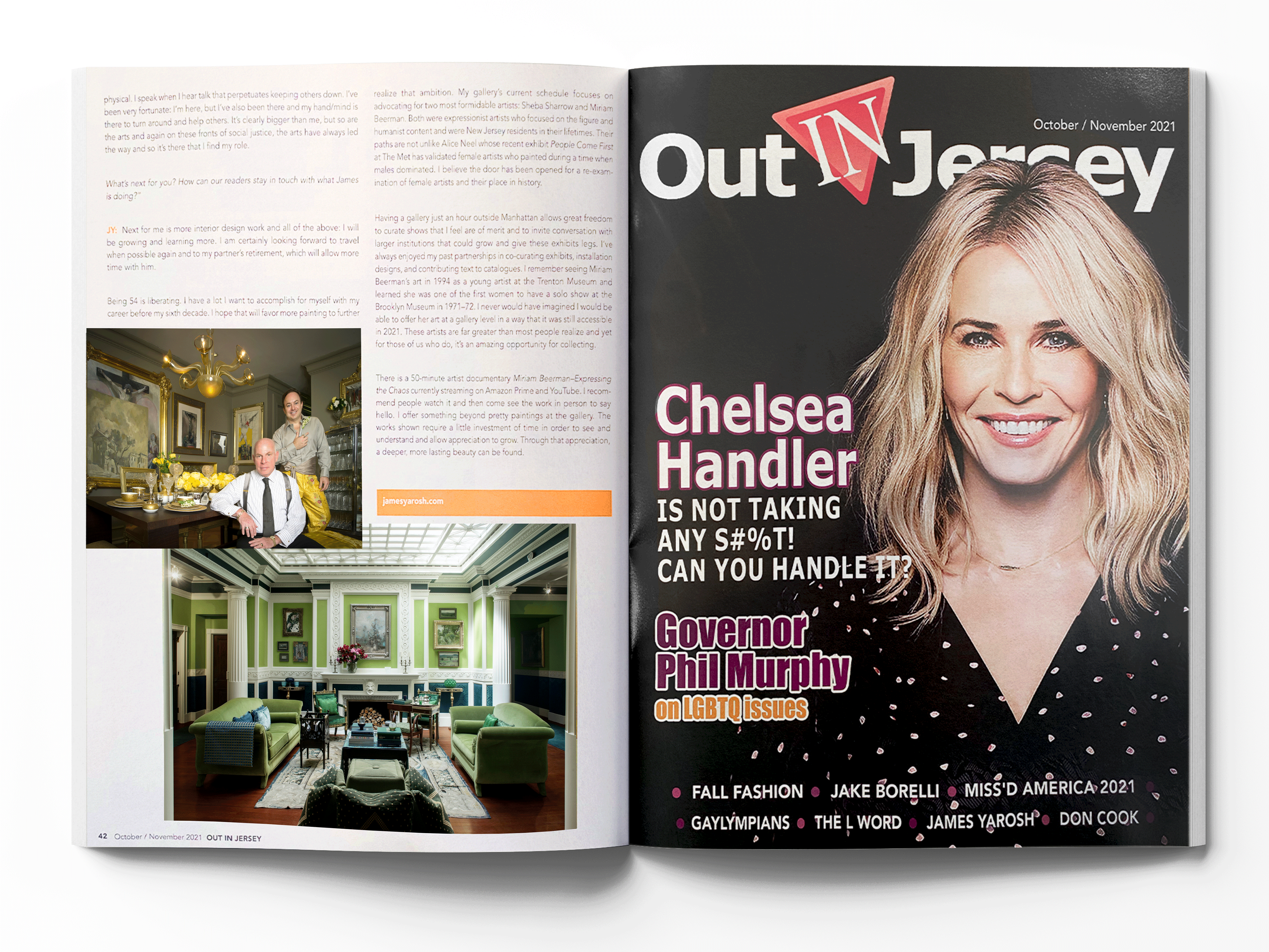
"What’s next for you? How can our readers stay in touch with what James is doing?
Next for me is more interior design work and all of the above: I will be growing and learning more. I am certainly looking forward to travel when possible again and to my partner’s retirement, which will allow more time with him.
Being 54 is liberating. I have a lot I want to accomplish for myself with my career before my sixth decade. I hope that will favor more painting to further realize that ambition. My gallery’s current schedule focuses on advocating for two most formidable artists: Sheba Sharrow and Miriam Beerman. Both were expressionist artists who focused on the figure and humanist content and were New Jersey residents in their lifetimes. Their paths are not unlike Alice Neel whose recent exhibit People Come First at The Met has validated female artists who painted during a time when males dominated. I believe the door has been opened for a re-examination of female artists and their place in history.
Having a gallery just an hour outside Manhattan allows great freedom to curate shows that I feel are of merit and to invite conversation with larger institutions that could grow and give these exhibits legs. I’ve always enjoyed my past partnerships in co-curating exhibits, installation designs and contributing text to catalogues. I remember seeing Miriam Beerman’s art in 1994 as a young artist at the Trenton Museum and learned she was one of the first women to have a solo show at the Brooklyn Museum in 1971–72. I never would have imagined I would be able to offer her art at a gallery level in a way that it was still accessible in 2021. These artists are far greater than most people realize and yet for those of us who do, it’s an amazing opportunity for collecting.
There is a 50-minute artist documentary “Miriam Beerman–Expressing the Chaos” currently streaming on Amazon Prime and YouTube. I recommend people watch it and then come see the work in person to say hello. I offer something beyond pretty paintings at the gallery. The works shown require a little investment of time in order to see and understand and allow appreciation to grow. Through that appreciation, a deeper, more lasting beauty can be found.
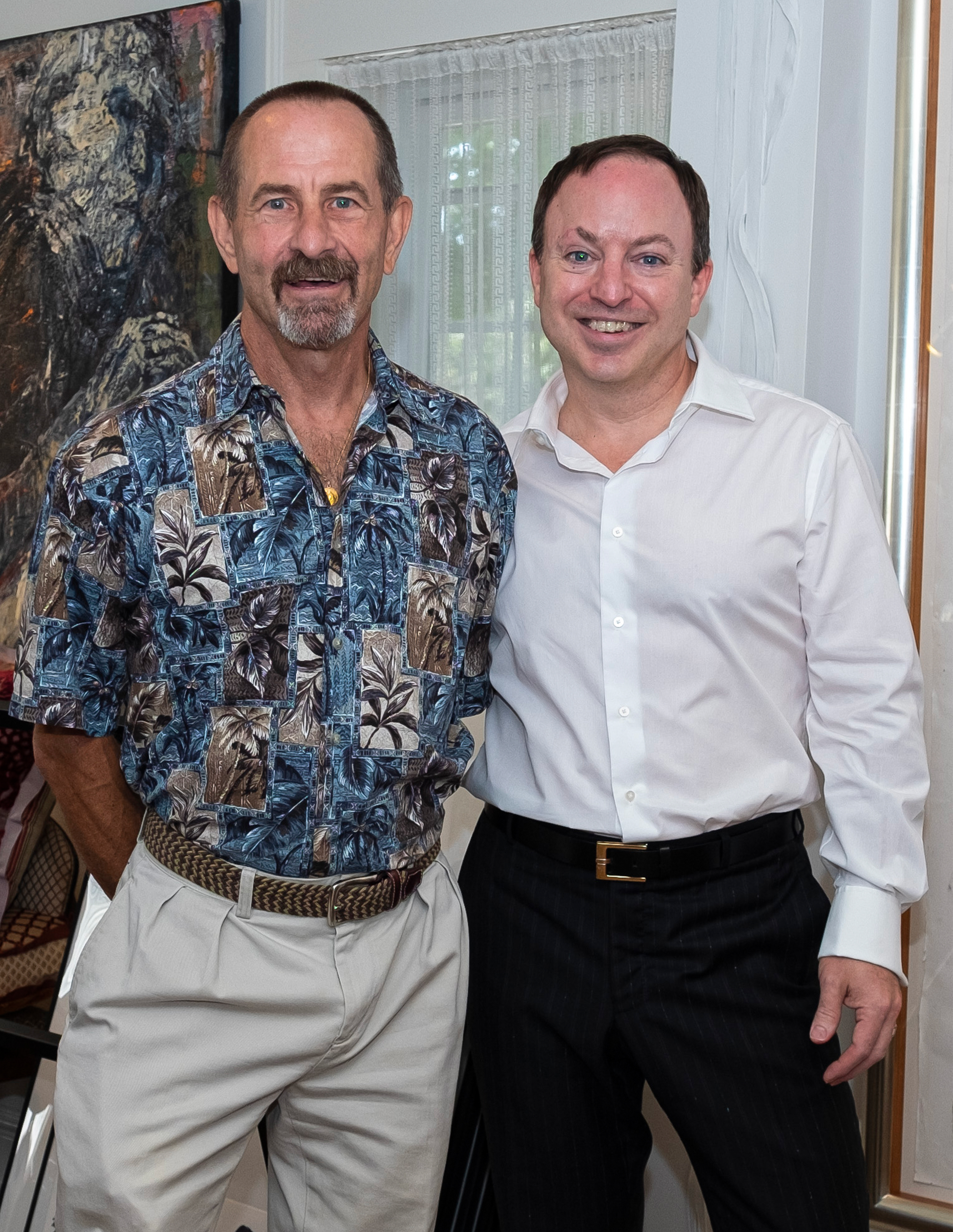
OUT IN JERSEY publisher Peter Frycki with James Yarosh - PHOTO: Matthew Aquino

